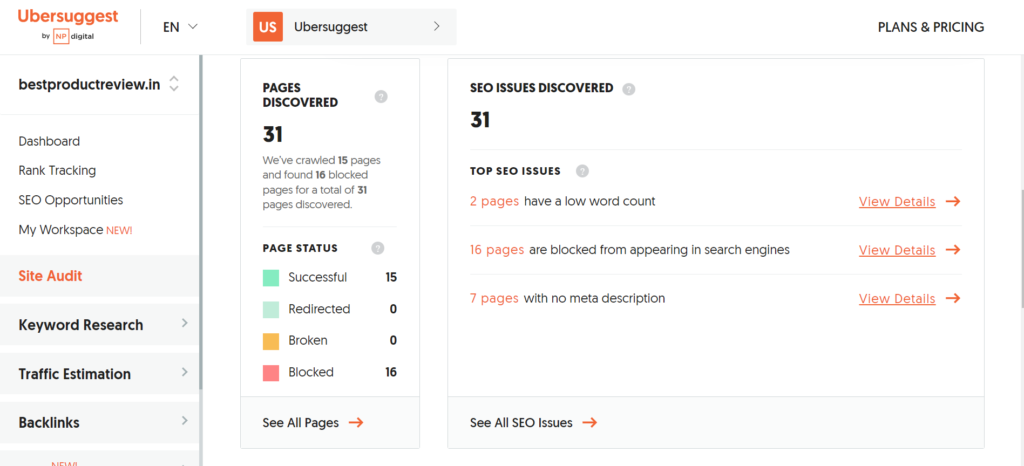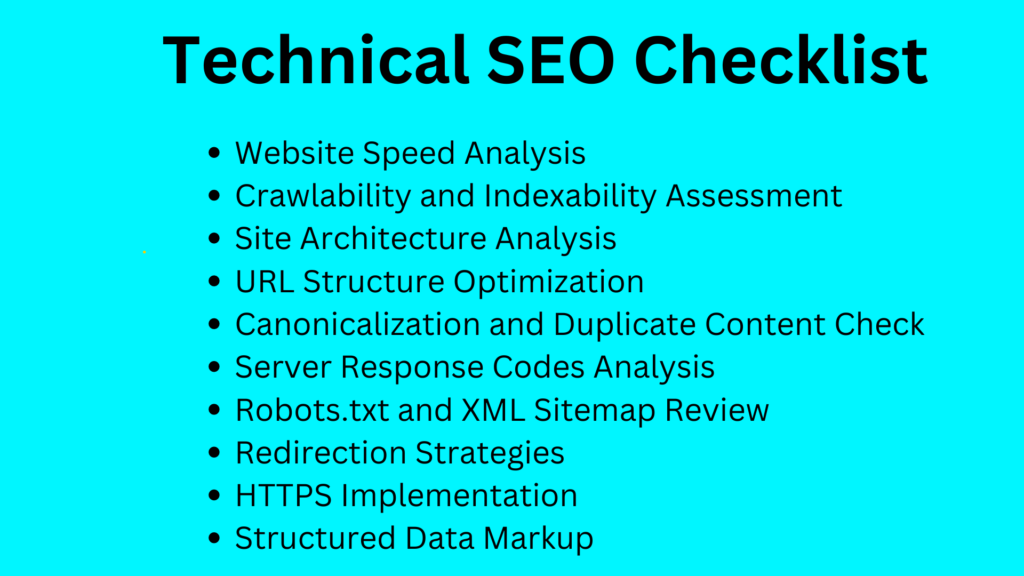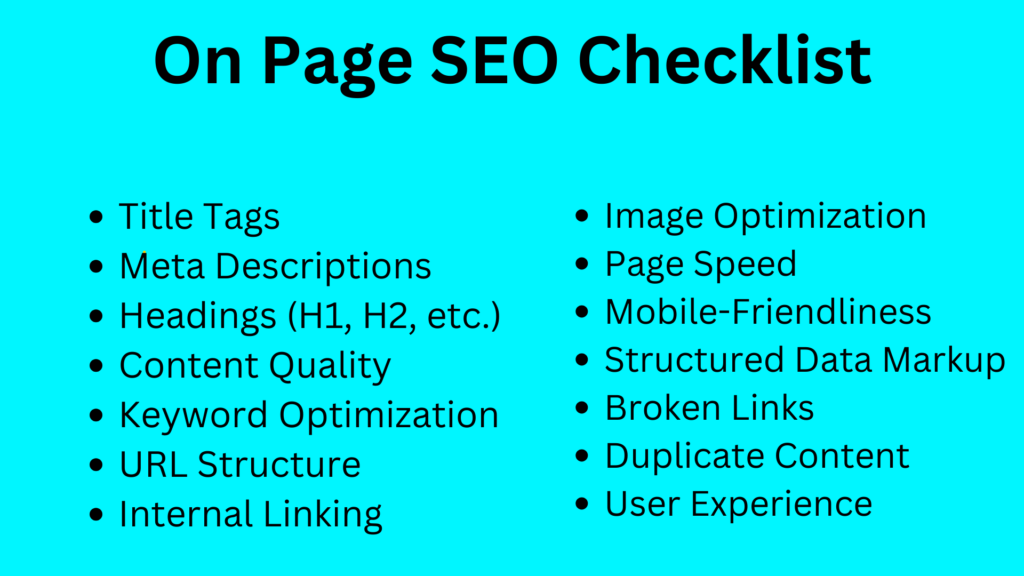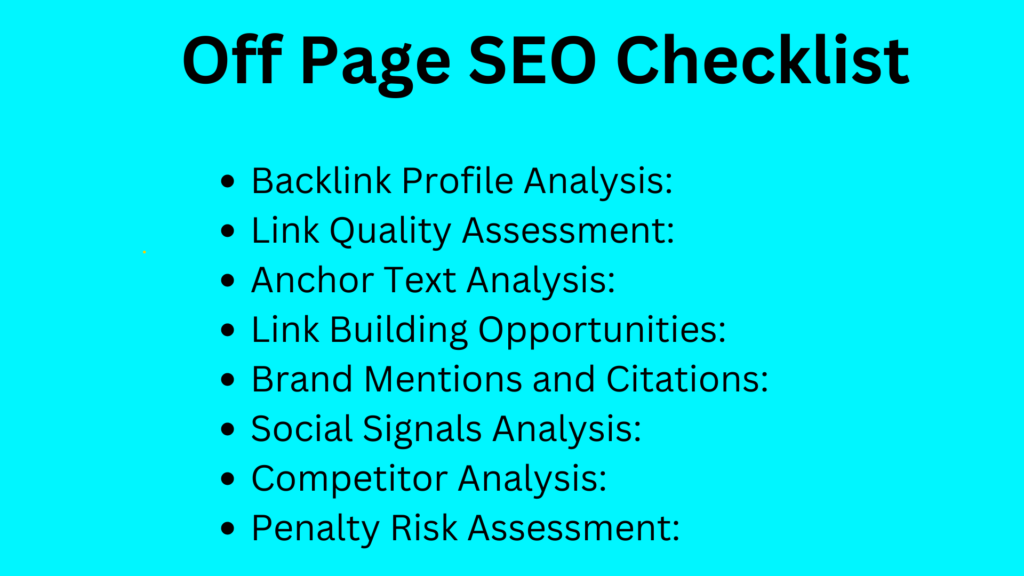Conducting an SEO audit means checking how well a website is doing in search engines.
This helps find out what it’s good at, what needs fixing, and how to make it better.
Regular SEO audits are super important. They help keep the website visible in searches, find ways to make it better, and make sure it stays competitive.
Introduction to SEO Audits
An SEO audit is like a check-up for a website to see how well it’s doing with things like showing up in search results.
It looks at different parts of the website to find what’s good, what needs work, and how to make it better.
By doing this, we can see where the website stands with search engines and find ways to make it more visible and higher up in search results.

Importance of Conducting Regular SEO Audits
Regular SEO check-ups are super important for keeping a website’s SEO strategy in good shape.
They help website owners and SEO experts stay up-to-date with what’s happening in search engines, what’s new in the industry, and what competitors are doing.
By finding and fixing problems early on, these check-ups make sure the website stays competitive, gets lots of organic visitors, and meets its goals.
Preparing for an SEO Audit
1. Setting Objectives and Goals:
- Before checking your website’s SEO, it’s important to know what you want to achieve.
- This could be things like getting higher in search results, bringing in more visitors from searches, or making your site easier to use.
- Having clear goals helps focus on what’s important during the audit.
2. Gathering Necessary Data and Tools:
- To do a good SEO check-up, you need the right info and tools.
- This means collecting data about how many people visit your site, where you show up in search results, which links to your site, and technical stuff like how fast your pages load and if search engines can easily see them.
- Tools like Google Analytics, Google Search Console, and other SEO software can help gather this info and make the audit easier.
3. Understanding Website Architecture and Structure:
- Knowing how your website is set up is really important for a good SEO check-up.
- This means looking at how your pages are organized, how they link together, and how easy it is for people to find what they need.
- If your website is organized well, it not only makes it better for visitors but also helps search engines understand and show your site in search results more often.
Steps to Perform an SEO Audit Technical SEO Audit
A technical SEO audit is like a deep dive into a website’s technical stuff to make it better in search results. Here’s what it’s all about:

Website Speed Analysis:
- We check how fast your pages load using tools like Google Page Speed Insights.
- If we find things slowing it down, like big images or fancy scripts, we fix them.
- Making images smaller, shrinking CSS and JavaScript files, and letting browsers save stuff can speed things up.
Crawlability and Indexability Assessment:
- We make sure search engines can find and show all the important pages on your site.
- If there are any problems, like broken links or pages that aren’t showing up, we fix them using tools like Google Search Console.
Site Architecture Analysis:
- We look at how your site is set up and how easy it is for people and search engines to find their way around.
- We fix things to make it easier for both, like making sure all your pages link to each other nicely.
URL Structure Optimization:
- We check if your web addresses (URLs) are easy to read and understand.
- Making them short and clear helps search engines, and visitors know what each page is about.
Canonicalization and Duplicate Content Check:
- We make sure search engines know which version of your content to show if copies are floating around.
- If there are duplicates, we point search engines to the original or get rid of them.
Server Response Codes Analysis:
- We check if your website is talking to search engines properly.
- If there are errors or pages are being sent to the wrong place, we fix them to keep everything smooth.
Robots.txt and XML Sitemap:
- We tell search engines which parts of your site they’re allowed to visit and which ones to ignore.
- We also make sure they know about all your pages using a special map called XML sitemap.
Redirection Strategies:
- If a page moves or changes, we make sure visitors and search engines are sent to the right spot.
- We use the right kind of directions to tell them if it’s a permanent move or just temporary.
HTTPS Implementation:
- We make sure your website is safe and secure with HTTPS, which helps it show up better in search results and builds trust with visitors.
A careful technical SEO audit looks at all these things to make your website easier to find and use, helping it climb higher in search rankings.
On-Page SEO Audit
An on-page SEO audit is a detailed examination of individual web pages to ensure they are optimized effectively for search engines and user engagement.
Here’s a breakdown of the key components involved in conducting an on-page SEO audit:

1. Keyword Optimization:
- Analyze the use of relevant keywords in page titles, meta descriptions, headers (H1, H2, etc.), and body content.
- Ensure keyword usage is natural and aligned with user intent.
- Identify opportunities to target additional relevant keywords.
2. Meta Tags and Descriptions:
- Check the presence and optimization of meta title tags and meta descriptions.
- Ensure meta tags accurately describe the content of the page and include relevant keywords.
- Optimize meta tags to encourage clicks from search engine users.
3. Content Quality and Relevance:
- Evaluate the quality, depth, and relevance of the page content.
- Ensure content provides value to users, answers their queries, and addresses their needs.
- Identify thin content or duplicate content issues and address them accordingly.
4. Header Tags (H1, H2, etc.):
- Check the use of header tags to structure the content logically.
- Ensure each page has a single H1 tag that accurately reflects the main topic.
- Use H2, H3, etc., tags to organize subtopics and improve readability.
5. Internal Linking Structure:
- Evaluate the internal linking structure to ensure it facilitates navigation and distributes link equity effectively.
- Use internal links to guide users to related content and improve crawlability.
- Optimize anchor text for internal links to provide context and relevancy.
6. Image Optimization:
- Assess the optimization of images for search engines and user experience.
- Ensure images have descriptive filenames, alt attributes, and optimized file sizes.
- Use relevant keywords in image alt text to improve accessibility and SEO.
7. URL Structure and Readability:
- Check the structure and readability of URLs.
- Ensure URLs are descriptive, concise, and contain relevant keywords.
- Use hyphens to separate words in URLs for readability and SEO.
8. Page Speed and Mobile Optimization:
- Assess page speed and performance on both desktop and mobile devices.
- Optimize page load times by compressing images, minifying code, and leveraging browser caching.
- Ensure pages are mobile-friendly and provide a seamless user experience across devices.
9. Schema Markup and Structured Data:
- Evaluate the use of schema markup and structured data to enhance search engine visibility.
- Implement structured data where relevant to provide additional context to search engines.
- Use schema markup to highlight key information such as reviews, ratings, and event details.
Conducting a thorough on-page SEO audit helps ensure that individual web pages are optimized effectively for search engines, driving organic traffic and improving overall website performance.
Off-Page SEO Audit
An off-page SEO audit focuses on evaluating external factors that impact a website’s search engine rankings, particularly its backlink profile and online reputation.
Here’s a detailed breakdown of the key components involved in conducting an off-page SEO audit:

1. Backlink Profile Analysis:
- Assess the quantity and quality of backlinks pointing to the website.
- Identify the domains and pages linking to the site and analyze their authority and relevance.
- Use tools like Ahrefs, Moz, or SEMrush to gather comprehensive backlink data.
2. Link Quality Assessment:
- Evaluate the quality of inbound links based on factors such as domain authority, page authority, relevance, and anchor text diversity.
- Identify any low-quality or spammy links that may be harming the website’s SEO performance.
3. Anchor Text Analysis:
- Analyze the anchor text used in backlinks to the website.
- Ensure anchor text is diverse and natural, with a mix of branded, exact match, partial match, and generic anchors.
- Identify any instances of over-optimization or unnatural linking patterns.
4. Link Building Opportunities:
- Identify opportunities to build new backlinks from authoritative and relevant websites.
- Research potential link-building strategies such as guest blogging, resource link-building, and outreach campaigns.
- Prioritize opportunities based on their potential impact on SEO and relevance to the website’s niche.
5. Brand Mentions and Citations:
- Monitor brand mentions and citations across the web.
- Identify unlinked brand mentions and reach out to website owners to request the inclusion of a backlink.
- Ensure consistency of NAP (Name, Address, Phone Number) information for local SEO purposes.
6. Social Signals Analysis:
- Evaluate the website’s presence and engagement on social media platforms.
- Assess the impact of social signals such as likes, shares, and comments on search engine rankings.
- Identify opportunities to improve social media visibility and engagement to influence SEO indirectly.
7. Competitor Analysis:
- Analyze the backlink profiles of competitors to identify potential link-building opportunities.
- Benchmark the website’s backlink profile against competitors to understand strengths and weaknesses.
- Identify strategies employed by competitors and adapt them to improve off-page SEO efforts.
8. Penalty Risk Assessment:
- Assess the risk of Google penalties due to low-quality or spammy backlinks.
- Identify and disavow toxic backlinks using Google’s Disavow Tool to mitigate the risk of penalties.
- Monitor the website’s backlink profile regularly to ensure ongoing compliance with Google’s quality guidelines.
Conducting a thorough off-page SEO audit helps identify opportunities to improve the website’s backlink profile, enhance its online reputation, and strengthen its overall SEO performance in search engine results pages (SERPs).
Content Audit
- Assess Content Quality: Evaluate the quality and relevance of existing content on the website.
- Analyze Content Depth: Determine if content provides sufficient depth and detail to satisfy user queries.
- Check for Uniqueness: Ensure content is unique and not duplicated from other sources.
- Keyword Optimization: Analyze keyword usage and optimization within the content.
- Evaluate Readability: Assess readability factors such as sentence structure, vocabulary, and formatting.
- Review Engagement Metrics: Examine metrics like bounce rate, time on page, and social shares to gauge content effectiveness.
User Experience (UX) Audit
- Assess Navigation: Evaluate the ease of navigation and accessibility of website menus and links.
- Analyze Page Layout: Ensure page layouts are intuitive and user-friendly, with clear calls to action.
- Check Readability: Evaluate text readability, font sizes, and contrast for optimal readability.
- Test Mobile Responsiveness: Check how well the website adapts to different screen sizes and devices.
- Evaluate Usability: Assess overall usability by testing common user tasks and interactions.
- Consider Accessibility: Ensure the website complies with accessibility standards for users with disabilities.
Mobile Optimization Audit
- Evaluate Mobile Site Speed: Test mobile page load times and identify areas for improvement.
- Check Mobile-Friendly Design: Ensure the website layout and design are optimized for mobile devices.
- Assess Touchscreen Usability: Evaluate how easy it is to interact with the website on touchscreen devices.
- Test Mobile Usability: Conduct usability tests to identify any issues specific to mobile users.
- Consider Mobile SEO: Analyze mobile-specific SEO factors such as mobile-friendly labels and mobile-first indexing.
- Implement Responsive Design: Ensure the website uses responsive design techniques to provide a consistent experience across devices.
FAQ:
1. Why is a technical SEO audit important?
A technical SEO audit ensures that a website is accessible, crawlable, and indexable by search engines, laying the foundation for good search engine rankings.
2. What does an on-page SEO audit involve?
An on-page SEO audit evaluates individual web pages to ensure they are optimized for relevant keywords, have appropriate meta tags, headers, and content, and adhere to best practices for on-page optimization.
3. Why is an off-page SEO audit necessary?
An off-page SEO audit helps assess the website’s backlink profile, identify opportunities to build or improve backlinks, and understand the website’s authority and relevance in the eyes of search engines.
4. What are the benefits of a content audit?
A content audit helps identify content gaps, optimize existing content for search engines and users, and ensure that the website offers valuable and engaging content that meets the needs of its target audience.
Analyzing SEO Audit Results
After conducting an SEO audit, it’s crucial to analyze the results to identify strengths, weaknesses, and areas for improvement.
Here’s how to effectively analyze SEO audit results:
1. Identifying Strengths and Weaknesses:
- Evaluate the overall performance of the website based on audit findings.
- Identify areas where the website excels, such as strong backlink profiles or well-optimized content.
- Identify weaknesses, such as technical issues, poor content quality, or ineffective keyword targeting.
- Consider both on-page and off-page factors to gain a comprehensive understanding of the website’s SEO health.
2. Prioritizing Action Items:
- Prioritize action items based on their impact on SEO performance and resource requirements.
- Focus on addressing critical issues that have the most significant impact on search visibility and user experience.
- Consider the urgency of fixes, potential return on investment, and alignment with business goals when prioritizing action items.
- Break down action items into manageable tasks and create a timeline for implementation.
3. Creating an SEO Action Plan:
- Develop a detailed SEO action plan outlining specific tasks, responsibilities, and timelines.
- Assign tasks to team members or external partners based on their expertise and availability.
- Set measurable goals and key performance indicators (KPIs) to track progress and measure success.
- Monitor implementation closely and make adjustments as needed to ensure the SEO action plan achieves desired outcomes.
Analyzing SEO audit results allows businesses to gain valuable insights into their website’s SEO performance and develop targeted strategies for improvement.
By identifying strengths and weaknesses and prioritizing action items, organizations can create an effective SEO action plan to enhance their online visibility and drive sustainable growth.
Monitoring and Maintenance
Once SEO audit recommendations have been implemented, it’s crucial to monitor the website’s performance and maintain its optimization over time.
Here’s how to effectively monitor and maintain SEO efforts:
1. Regular Monitoring of Key Metrics:
- Track key performance indicators (KPIs) such as organic traffic, keyword rankings, conversion rates, and bounce rates.
- Utilize web analytics tools like Google Analytics and Google Search Console to monitor website traffic and user behavior.
- Set up automated alerts for significant changes or issues that may arise, such as sudden drops in traffic or spikes in bounce rates.
2. Periodic SEO Audits and Updates:
- Conduct regular SEO audits to identify new opportunities, address emerging issues, and ensure ongoing optimization.
- Schedule audits at regular intervals, such as quarterly or biannually, to stay proactive and responsive to changes in the SEO landscape.
- Update SEO strategies and tactics based on audit findings, industry trends, and algorithm updates from search engines.
3. Staying Updated with SEO Trends and Best Practices:
- Stay informed about developments in the SEO industry by following reputable blogs, forums, and news sources.
- Attend conferences, webinars, and workshops to learn from industry experts and stay abreast of emerging trends and best practices.
- Participate in online communities and discussion forums to share knowledge, ask questions, and exchange ideas with fellow SEO professionals.
By regularly monitoring key metrics, conducting periodic SEO audits, and staying updated with SEO trends and best practices, businesses can ensure their website remains optimized for search engines and continues to attract organic traffic and drive conversions over time.
Ongoing maintenance is essential to sustain and improve SEO performance in the ever-evolving digital landscape.
Conclusion: The Importance of SEO Audits for Website Success
In conclusion, SEO audits play a crucial role in ensuring the success and effectiveness of a website’s SEO strategy.
Here’s why they are indispensable:
- Optimizing Performance: SEO audits help identify areas of improvement and optimization, ensuring that the website performs at its best in search engine results pages (SERPs).
- Enhancing Visibility: By uncovering technical issues, on-page optimizations, and off-page opportunities, SEO audits enhance the website’s visibility and reach to potential audiences.
- Improving User Experience: Addressing issues related to content quality, website navigation, and mobile responsiveness improves the overall user experience, leading to higher engagement and conversions.
- Staying Competitive: Regular SEO audits help businesses remain competitive by keeping up with industry trends, algorithm updates, and changes in user behavior.
- Maximizing ROI: By prioritizing action items based on their impact and resource requirements, SEO audits help businesses allocate resources effectively to achieve maximum ROI.
In essence, SEO audits serve as a roadmap for continuous improvement, guiding businesses toward achieving their SEO goals and driving long-term success in the digital landscape.
Regular audits are essential to adapt to changes, capitalize on opportunities, and maintain a competitive edge in the ever-evolving world of search engine optimization.